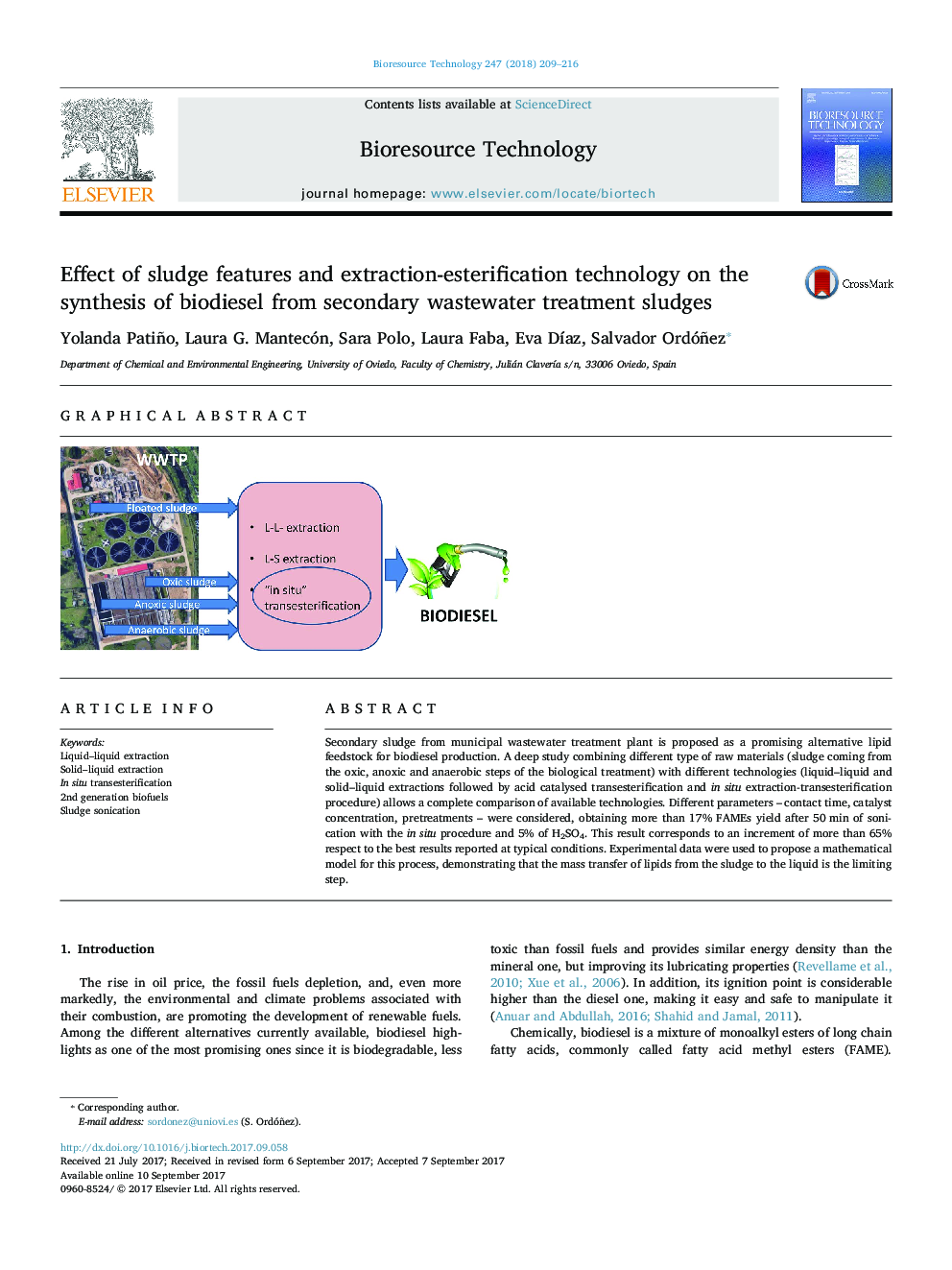| کد مقاله | کد نشریه | سال انتشار | مقاله انگلیسی | نسخه تمام متن |
|---|---|---|---|---|
| 4996641 | 1459897 | 2018 | 8 صفحه PDF | دانلود رایگان |
- Different technologies for FAME obtention from secondary sludge were compared.
- In situ extraction and transesterification provide the best results.
- Ultra-sonication improves biodiesel yields.
- In situ transesterification is controlled by mass transfer.
Secondary sludge from municipal wastewater treatment plant is proposed as a promising alternative lipid feedstock for biodiesel production. A deep study combining different type of raw materials (sludge coming from the oxic, anoxic and anaerobic steps of the biological treatment) with different technologies (liquid-liquid and solid-liquid extractions followed by acid catalysed transesterification and in situ extraction-transesterification procedure) allows a complete comparison of available technologies. Different parameters - contact time, catalyst concentration, pretreatments - were considered, obtaining more than 17% FAMEs yield after 50Â min of sonication with the in situ procedure and 5% of H2SO4. This result corresponds to an increment of more than 65% respect to the best results reported at typical conditions. Experimental data were used to propose a mathematical model for this process, demonstrating that the mass transfer of lipids from the sludge to the liquid is the limiting step.
220
Journal: Bioresource Technology - Volume 247, January 2018, Pages 209-216
